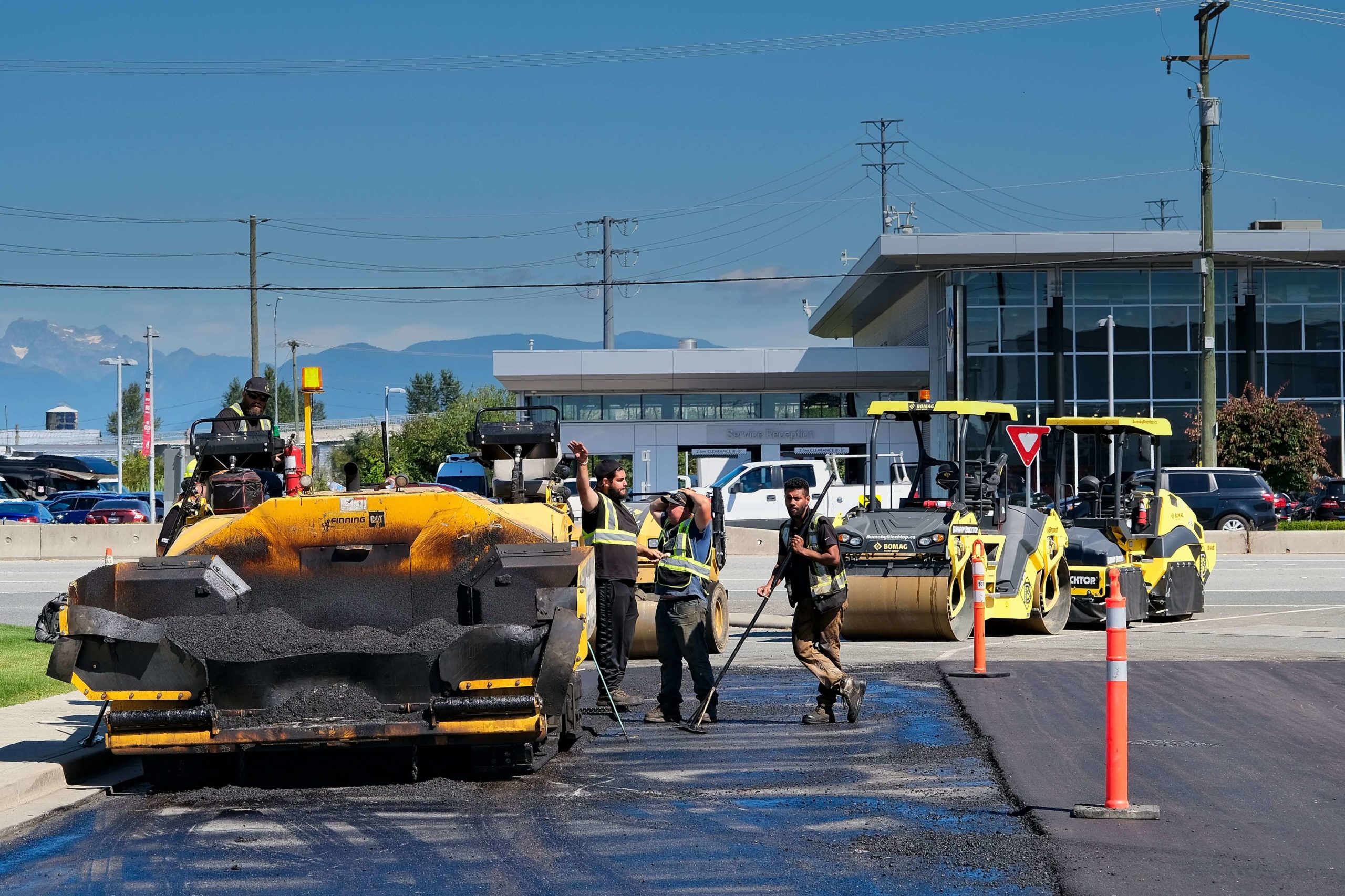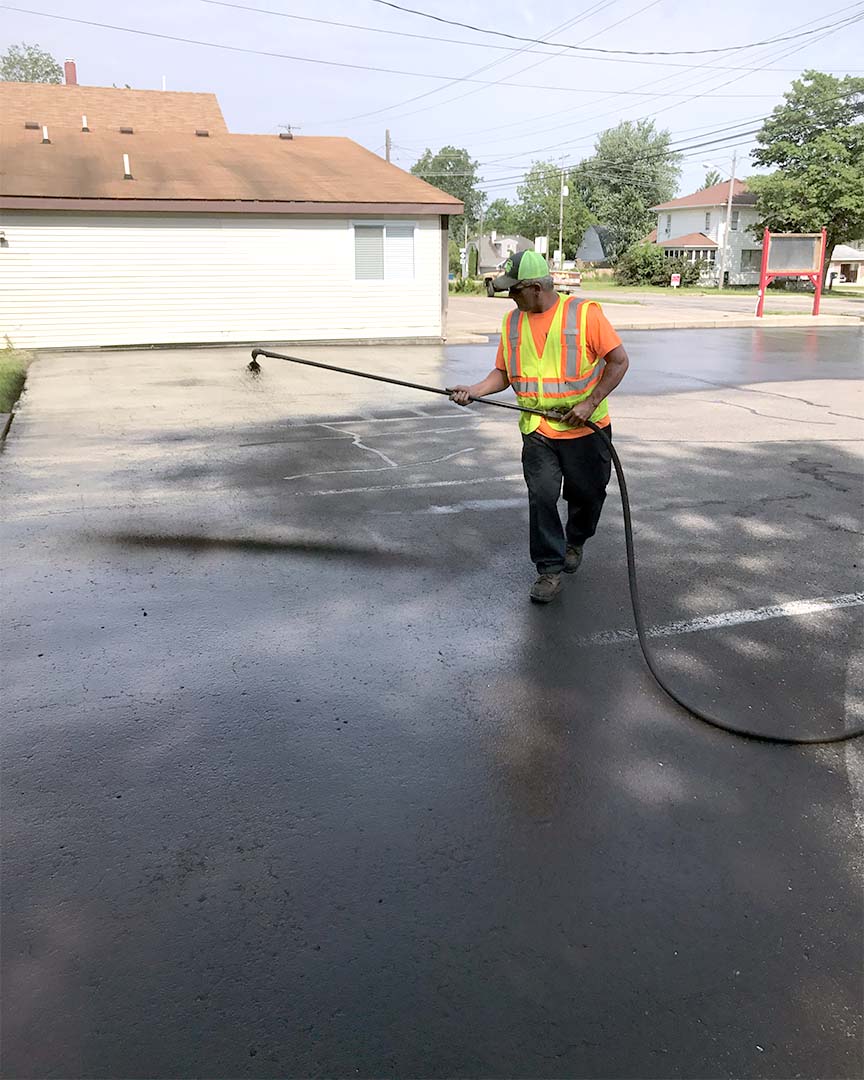Take Full Advantage Of Financial Investment Returns: Angled Parking Lot Perfection with Asphalt Sealing
Take Full Advantage Of Financial Investment Returns: Angled Parking Lot Perfection with Asphalt Sealing
Blog Article
Hot Mix Asphalt: A Sustainable Option for Sidewalk
Hot Mix Asphalt (HMA) has actually emerged as a leading sustainable option for sidewalk solutions, offering a myriad of ingenious modern technologies and ecological benefits. As the need for eco-friendly building techniques grows, discovering the subtleties of HMA's sustainability can give important insights into the future of pavement services.
Environmental Advantages of Warm Mix Asphalt

Moreover, Warm Mix Asphalt assists to mitigate urban warm island impacts. Its dark shade takes in sunlight, reducing the quantity of warmth reflected back into the ambience compared to lighter-colored sidewalks. This can lower ambient temperatures in city locations, reducing the need for a/c and inevitably decreasing power intake.
Additionally, Hot Mix Asphalt adds to improved stormwater administration. Its porous nature enables water to charge and penetrate the sidewalk groundwater products, lowering drainage and the danger of flooding. These ecological benefits make Hot Mix Asphalt a sustainable selection for paving roadways and highways.
Power Performance in HMA Production
Is energy effectiveness a vital element in the manufacturing of Warm Mix Asphalt (HMA)? Power plays a considerable role in the production of HMA, affecting both expense and environmental sustainability. One key aspect of power performance in HMA manufacturing is the use of warm mix asphalt (WMA) modern technologies.
Moreover, developments in plant modern technologies have led to more energy-efficient HMA manufacturing procedures. By maximizing power use in HMA manufacturing, the market can minimize its carbon footprint while preserving top quality sidewalk materials.
Recyclability of Warm Mix Asphalt
The recyclability of Warm Mix Asphalt (HMA) is an essential element of its sustainability and long-term ecological effect. HMA is just one of the most recycled products in the USA, with over 100 million heaps of reclaimed asphalt sidewalk (RAP) being reused each year in brand-new sidewalk building and construction. Recycling HMA offers numerous ecological benefits, such as minimizing the need for virgin products, reducing power consumption during production, and decreasing the amount of waste sent out to landfills.
The process of reusing HMA involves milling the existing sidewalk, squashing it into smaller pieces, and mixing it with new aggregate and asphalt binder to develop a recycled mix. On the whole, the recyclability of HMA plays a significant role in advertising sustainable methods within the pavement sector.

Long-Term Efficiency of HMA
Asphalt pavements demonstrate longevity and durability over a prolonged period, showing the long-term performance of Hot Mix Asphalt (HMA) The longevity of HMA can be attributed to its ability to stand up to heavy traffic tons, rough weather problems, and the impacts of aging. Research studies have actually shown that well-designed and properly created HMA sidewalks can last for two decades or more with routine maintenance. The key to making the most of the lasting performance of HMA exists in using high-quality materials, complying with finest methods in construction, and carrying out reliable maintenance approaches. Correct water drainage, regular assessments, and timely repair services are necessary for protecting useful link the architectural integrity of HMA pavements gradually. In addition, developments in HMA technology, such as the use of polymer-modified binders and cozy mix asphalt, have additionally improved the resilience and long life of HMA pavements. By focusing on high quality building and construction and upkeep techniques, HMA continues to show itself as a economical and lasting solution for long-lasting pavement facilities.

HMA: Longevity and Sustainability
Demonstrating both sturdiness and sustainability, Hot Mix Asphalt (HMA) has become a keystone in the construction of durable sidewalk frameworks - regrading. HMA's resilience originates from its capacity to withstand hefty lots, rough climate problems, and high web traffic quantities, making it a reliable choice for roads, freeways, and flight terminal runways. The structure of HMA, which usually includes accumulations, binder, and filler, plays an essential function in enhancing its long life and resistance to tear and put on
Furthermore, HMA's sustainability depends on its recyclability and energy-efficient production procedure. The capacity to reuse recovered asphalt sidewalk (RAP) in new HMA mixes reduces the need for virgin products and minimizes the environmental effect of pavement building and construction and upkeep. In addition, the energy performance of generating HMA depends on its reduced blending temperature levels compared to other pavement products, bring about minimized energy intake and greenhouse gas exhausts.
Final Thought
In conclusion, warm mix asphalt (HMA) offers a lasting service for sidewalk with its eco-friendly features. HMA's recyclability, energy performance in production, and long-lasting durability make it an eco-friendly selection for roadway building and construction. By conserving natural deposits, reducing waste, and lowering greenhouse gas exhausts, HMA plays a critical function in promoting sustainability in look at this website infrastructure advancement. Its capacity click here to read to mitigate city heat island effects better highlights its relevance in creating resistant and environmentally mindful sidewalk systems.
HMA is one of the most recycled materials in the United States, with over 100 million lots of reclaimed asphalt pavement (RAP) being recycled every year in new pavement building.The procedure of reusing HMA involves grating the existing sidewalk, crushing it into smaller sized pieces, and mixing it with new accumulation and asphalt binder to create a recycled mix.Asphalt sidewalks demonstrate sturdiness and durability over an extended period, reflecting the lasting efficiency of Warm Mix Asphalt (HMA) Additionally, advancements in HMA technology, such as the use of polymer-modified binders and cozy mix asphalt, have actually even more boosted the sturdiness and longevity of HMA pavements. The ability to recycle reclaimed asphalt sidewalk (RAP) in new HMA combinations lowers the need for virgin materials and reduces the ecological influence of pavement building and upkeep.
Report this page